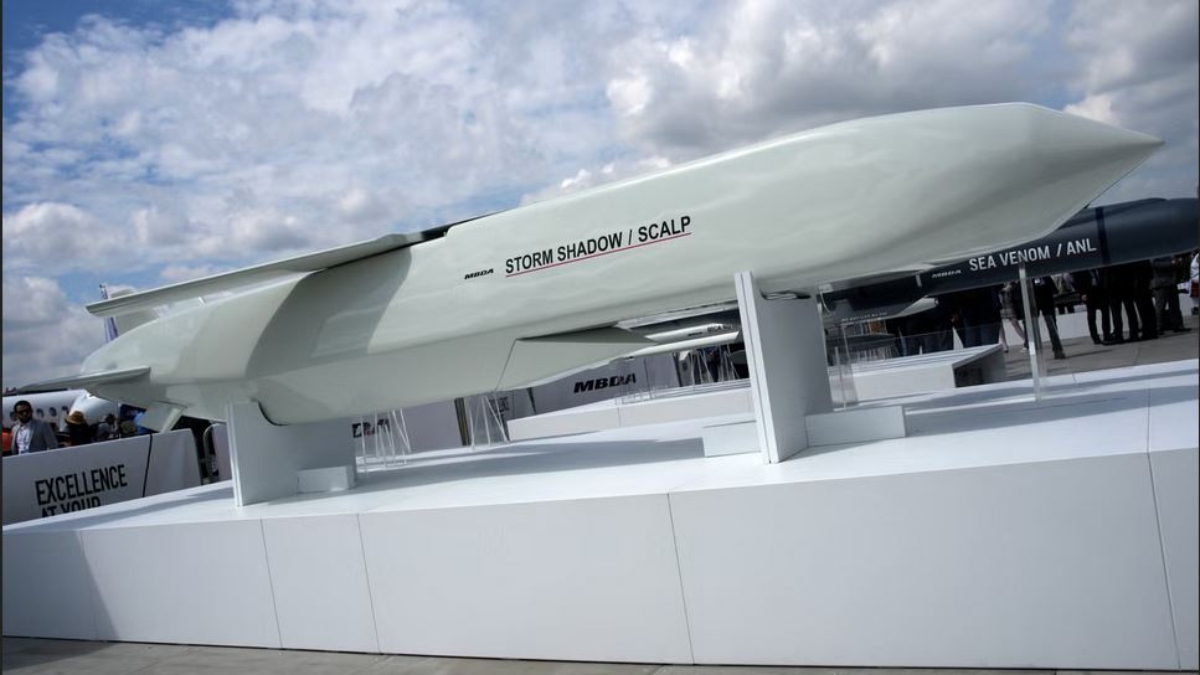After US President Joe Biden gave Ukraine the permission to use the Army Tactical Missile System (ATACMs) missiles to strike targets deep inside Russia, the focus has turned towards Storm Shadow -- a similar long-distance cruise missile supplied to Kyiv by London. The United States authorized the use of ATACMs by Ukraine as Russia has been targeting Ukraine's infrastructure with drone and missile attacks.
For more than a year, Ukraine has been using US-supplied ATACMs to hit Russian targets in occupied Ukrainian territory. However, Kyiv so far did not have the US sanction to use them inside Russia. The arrival of North Korean troops to assist the Russian invasion army in the conflict in Kursk could be among the reasons that forced the White House to approve the broader use of ATACMs by Ukrainian soldiers.
NATO focus shifts to Storm Shadow missiles
Many in London now wonder if the United Kingdom would follow the path chosen by the United States and let Volodymyr Zelenskyy's country use the air-launched Storm Shadow missiles to perish targets inside Russian territory. If you are not familiar with the lethal English weapon system, here are a few basic things to know about Storm Shadow which has been crucial to Ukraine's war efforts for over a year now:
ALSO READ | Russian MPs cry 'World War-3' as Biden authorises Ukraine to strike Kursk with US ATACMS
It was in May 2023 that the United Kingdom confirmed the decision to arm Ukraine with the Storm Shadow missiles. Since then, Russian forces were dealt serious blows with the Anglo-French cruise missiles that possess a maximum range of around 250 km.
A Storm Shadow/SCALP-EG passing by on a low altitude. Exact date and time when this was filmed is unknown. pic.twitter.com/btkbDWm4m0
— NOELREPORTS 🇪🇺 🇺🇦 (@NOELreports) September 19, 2023
Used by the French and English air forces during conflicts in Yemen, Syria, Iraq and Libya, Storm Shadow missiles, called 'Scalp' by the French, are known for penetrating into the targets before detonating its main warhead. Thus, Russia's armoured bunkers and ammunition caches become vulnerable once these killer machines are in the air.
Storm Shadow missiles: A closer look
On impact, it penetrates the target before a delayed fuse detonates the main warhead. Powered by a turbo-jet engine, the 1,300kg-heavy missiles can cross 960 kmh speed limits when inbound. The deadly missiles are just over five metres in length and has a wingspan of three metres, The Independent said in a report.
ALSO READ | Inside Russia's plan to mix deadly new weapon among decoy drones in Ukraine
Once launched, these bad boys descend to a low cruising altitude powered by a turbojet engine. This reduces the chance of getting caught by enemy radar before its triple navigation system that uses Inertial Navigation, GPS (Global Positioning System) and Terrain Reference Navigation systems go online. This three-level system provides the weapon with a high degree of navigational precision, MBDA Systems claimed.
A costly war affair
Even single-seater fighter planes can be equipped with this weapon that has been in service since 2003. It is noteworthy that each Storm Shadow costs around one million US Dollars. Thus, the NATO allies had earlier instructed Kyiv to use them judiciously. According to the BBC, Ukraine used to fire Storm Shadow after ensuring Russian air defense systems remained busy. Attack drones are scattered to confuse the Russians and while they become busy gunning them down, the "costly" and more impactful Storm Shadows are strategically launched. At times, Ukraine even waits until the air defense systems run dry or have to reload before launching Shadows, the report added.
Before Storm Shadow managed to get to Moscow, Ukrainian drones are already there🔪👹🔥 https://t.co/mhYTnoqFDu pic.twitter.com/gX3qmeuk3c
— CyberUnknown (@CyberUnknown45) November 18, 2024
The missile is equipped with an imaging infrared seeker that is activated during the final target approach phase. During this stage, the missile climbs to a higher altitude to maximise the chances of hitting the target. Automatic target recognition algorithms then compare the real scene with the target impact point designated during the mission planning phase, in order to hit the target exactly where required, MBDA Systems further explained.



